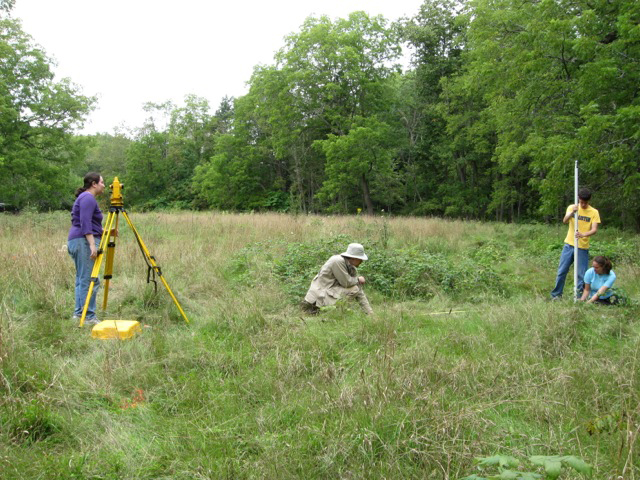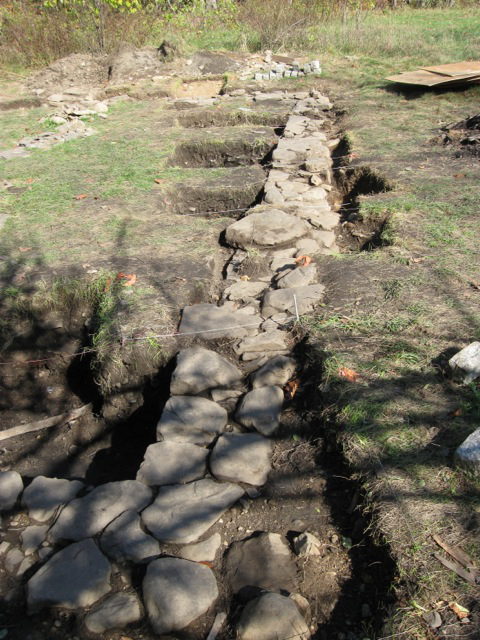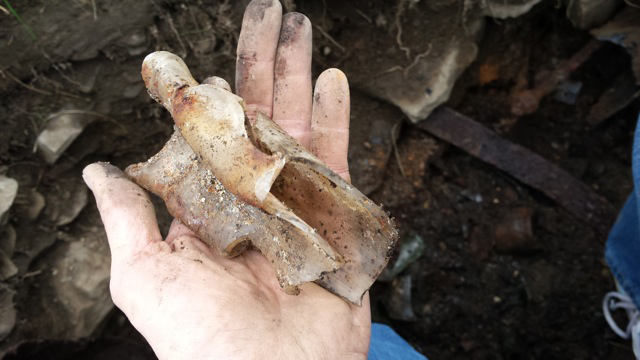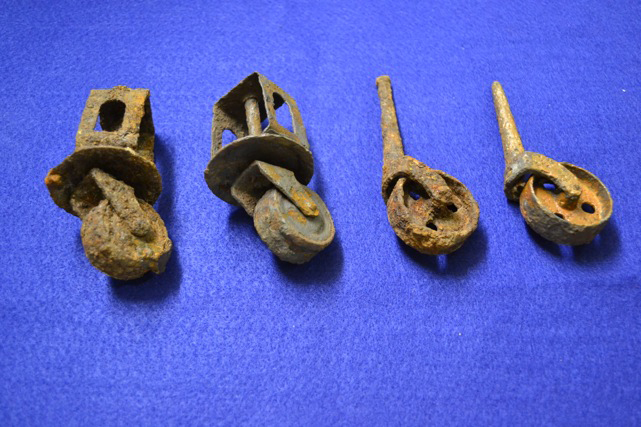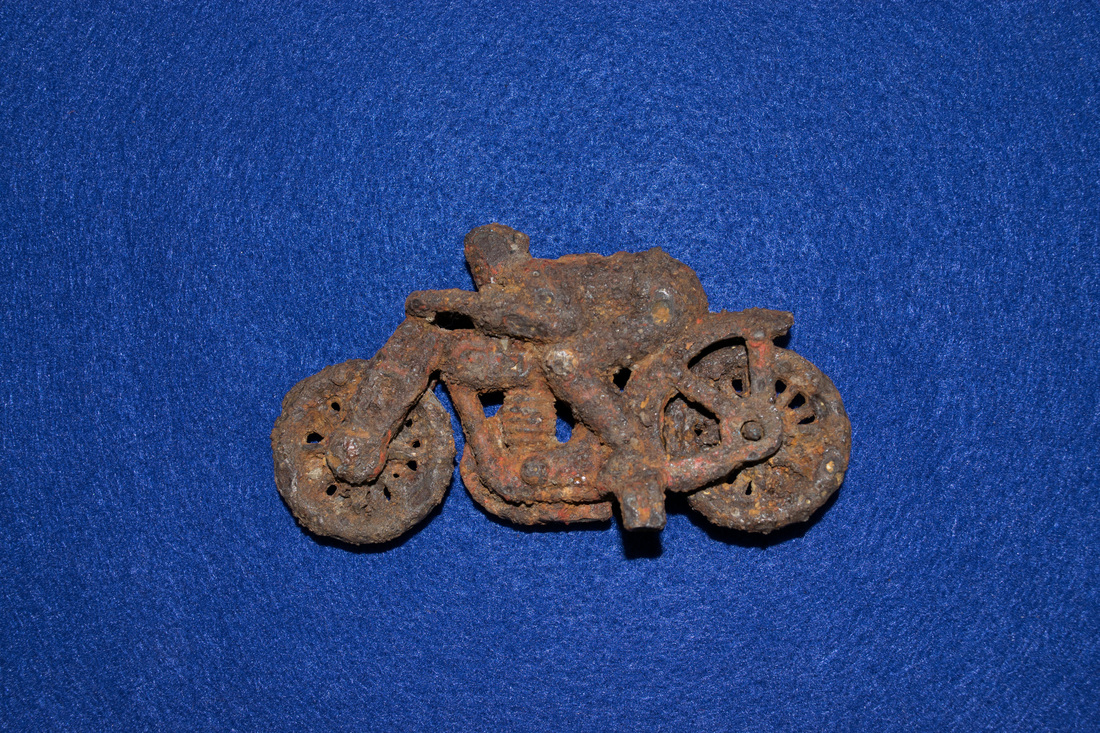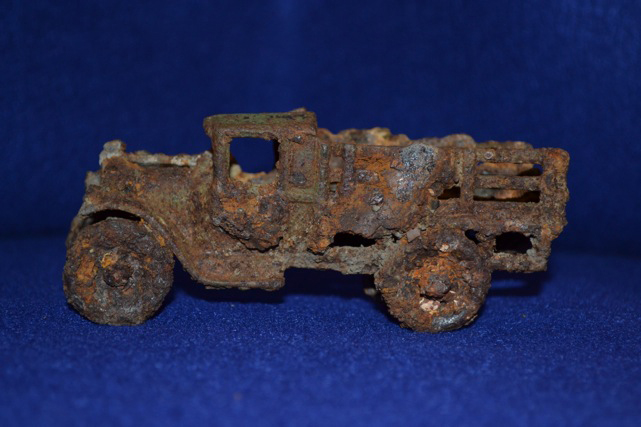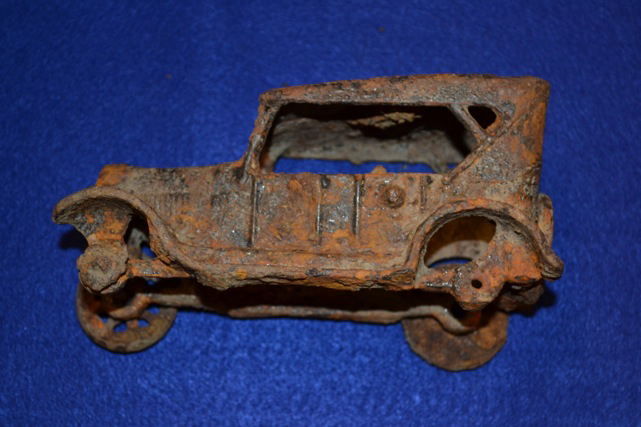The Rumsey House - A Story of Millers and Farmers
The Rumsey family helped establish the community of Enfield Falls. Isaac Rumsey built the first grist mill in the hamlet in 1817, grinding the grain brought in by local farmers. Following the economic depression known as the “Panic of 1837,” Isaac Rumsey was forced to sell his grist mill to Jared Treman. Jared Treman is the ancestor of Robert H. Treman who, in the twentieth century, gave the grist mill and land he had bought which made up Enfield Falls to the State of New York to establish today’s park. As we shall see, the Rumsey family recovered from the 1837 depression, but the family’s descendants refused to sell their farm and home to Robert H. Treman when he bought up the hamlet in the early 20th century! How some of the Rumsey land nevertheless ended up as a part of the park is a complex story which also tells us a lot about the complexities of rural life in the 1800s – for the people living it, it was not a “simple country life,” as human ambition could play a major role.
In 1853, Isaac Rumsey's sons Oliver and Alonzo purchased 32 acres of land near the hamlet and established a shingle mill to make roof shingles. The Panic of 1857 – another depression – ended their saw mill, and by 1860 the brothers had become farmers. The brothers evidently benefitted from the Civil War (1861-1865), when Abraham Lincoln’s Union armies needed vast quantities of food, cattle, and horses. By 1866, Oliver had built a home that we call the Rumsey House.
By the 1870s, Oliver's fortunes had vastly increased since the brothers' initial purchase of 32 acres and Oliver now owned 89½ acres of farmland. In 1874, Oliver sold his farmland to his sons Orville and Don. After Oliver’s death sometime after 1880, Orville, a bachelor, lived in the family's house with his married brother Don and his wife and children, including boys named Warren and Milton. After Don died in 1900, Orville took care of his nephews, Warren and Milton. In 1905, Orville willed his property to these two young nephews. Unlike many residents of Enfield Falls, Warren and Milton decided not to sell their family house and farm to Robert Treman during the era of World War I. In 1922, Warren sold his half of the property to his brother Milton. By 1926, New York State had created plans for a new entrance and roadway into the park to replace the original curved and steeply-graded road that led into the hamlet. The State’s one problem was that the Rumsey property was right in the middle of the planned location for the new road and entrance. At this point Milton Rumsey finally decided to sell all of the Rumsey family's 89 ½ acres and the home for $7,000 dollars, a generous sum for rural property in the 1920s.
While we don’t know how the park used the Rumsey House, it is probable that it was also used to house park employees. During the early decades of the park we have records showing that the Budd House and the Tryon House were used to house park staff. We do not know exactly when it was demolished but it would have happened sometime between 1929 and 1938. We know this because an aerial photograph shows the Rumsey house in 1929, but a 1938 park map shows that the Rumsey house is gone.
In 1853, Isaac Rumsey's sons Oliver and Alonzo purchased 32 acres of land near the hamlet and established a shingle mill to make roof shingles. The Panic of 1857 – another depression – ended their saw mill, and by 1860 the brothers had become farmers. The brothers evidently benefitted from the Civil War (1861-1865), when Abraham Lincoln’s Union armies needed vast quantities of food, cattle, and horses. By 1866, Oliver had built a home that we call the Rumsey House.
By the 1870s, Oliver's fortunes had vastly increased since the brothers' initial purchase of 32 acres and Oliver now owned 89½ acres of farmland. In 1874, Oliver sold his farmland to his sons Orville and Don. After Oliver’s death sometime after 1880, Orville, a bachelor, lived in the family's house with his married brother Don and his wife and children, including boys named Warren and Milton. After Don died in 1900, Orville took care of his nephews, Warren and Milton. In 1905, Orville willed his property to these two young nephews. Unlike many residents of Enfield Falls, Warren and Milton decided not to sell their family house and farm to Robert Treman during the era of World War I. In 1922, Warren sold his half of the property to his brother Milton. By 1926, New York State had created plans for a new entrance and roadway into the park to replace the original curved and steeply-graded road that led into the hamlet. The State’s one problem was that the Rumsey property was right in the middle of the planned location for the new road and entrance. At this point Milton Rumsey finally decided to sell all of the Rumsey family's 89 ½ acres and the home for $7,000 dollars, a generous sum for rural property in the 1920s.
While we don’t know how the park used the Rumsey House, it is probable that it was also used to house park employees. During the early decades of the park we have records showing that the Budd House and the Tryon House were used to house park staff. We do not know exactly when it was demolished but it would have happened sometime between 1929 and 1938. We know this because an aerial photograph shows the Rumsey house in 1929, but a 1938 park map shows that the Rumsey house is gone.
Archaeology of a Milling Family
|
In 2012, archaeologists found the Rumsey family home’s “midden” – a word archaeologists use describe a garbage pit that was used to dispose of household refuse in the days before weekly curbside pickup of garbage became common in the 20th century. A follow-up excavation in 2013 located the foundation of the home. Historic maps from the 19th century only indicated the approximate location of the home within a 400-square foot area. Also, because the maps did not depict the structures of Enfield Falls to scale, no one knew how large the Rumsey family home was. Excavations of the foundation revealed that the home was 20 feet by 28 feet. Based on this evidence it can be concluded that the Rumsey family lived in a house similar in size to the other middle class members of Enfield Falls. Reflecting the Rumsey family's economic success, the home had a half basement (a basement with a ceiling lower than the typical 6-foot clearance found in full basements but larger than a crawl space).
In addition to the remains of the Rumsey house, archaeologists uncovered rubble from a catastrophic flood in 1935. The most striking evidence of the impact of the flood was the random scattering of large, rough field stones whose chaotic spread lacked any order or evidence of intentional placement on the landscape. |
|
In 2013, while the archaeologists searched for the foundation, they found charred wood, melted glass bottles (such as the one shown on the left), fire-scarred ceramics, and even metal, glass, and sometimes other materials including coal, fused together in the intense heat of a fire. The highest concentrations of melted objects were at the south corner, indicating that was where the inferno began.
|
|
In the charred ruins of the burned house, lots of unusual artifacts were found including the castors depicted on the right. Castors are the wheels found on the bottom of many pieces of furniture available today. The ease of moving furniture around allowed by the castors has led them to be widely adopted on office furniture in particular where frequent movement of the piece may be expected. However, these ubiquitous pieces were once a brand new innovation. First patented in 1871 by David A. Fisher, castors were originally invented to allow workers at furniture factories to more easily move a finished product from one place in the factory to another.
Two types of castors were found. Rigid castors are the most basic where only the wheel moves. The other type of castor that was found are swivel castors where the wheel is able to rotate horizontally 360 degrees to allow easier movement of furniture. Based on the pictures found in late 19th century mail order catalogues the rigid castors likely date to the 1890s. These may therefore have been on a piece of furniture once used by a member of the Rumsey family. Swivel castors were not invented until the 1920s. Because Milton Rumsey did not sell the family property until the mid-1920s, it is possible this castor came from one of the last pieces of furniture bought by the Rumsey family. However, it is more likely from a piece of furniture used by a staff member of the early park. |
|
|
The manufacturer of the toy truck (shown on the right) has not yet been identified. But the toy car was probably made by the Arcade Manufacturing Company of Freeport, Illinois. Originally founded as the Novelty Iron Works in 1868, it was reorganized into the Arcade Manufacturing Company in 1885. Originally exclusively making utilitarian household objects like coffee mills, in 1921 the company expanded its product offerings to include toy cars.
The cast iron toy car depicted on the right was designed to look like a Chevrolet sedan. One of the most popular models Chevrolet in the 1920s was the Series 490. The overall appearance of the car closely resembles the cast iron toy car found at the Rumsey site. |
In addition, archaeologists found artifacts associated with the children who once lived in the Rumsey house. Particularly noteworthy were three small cast iron toys: a car, a truck, and a motorcycle. The toys were made out of cast iron because it was both cheaper and more durable than tin. Research revealed that the motorcycle was made by the Hubley Manufacturing Company of Lancaster, Pennsylvania, around 1931 when the company secured exclusive rights to make toy replicas of Harley-Davidson Motorcycles.
|
